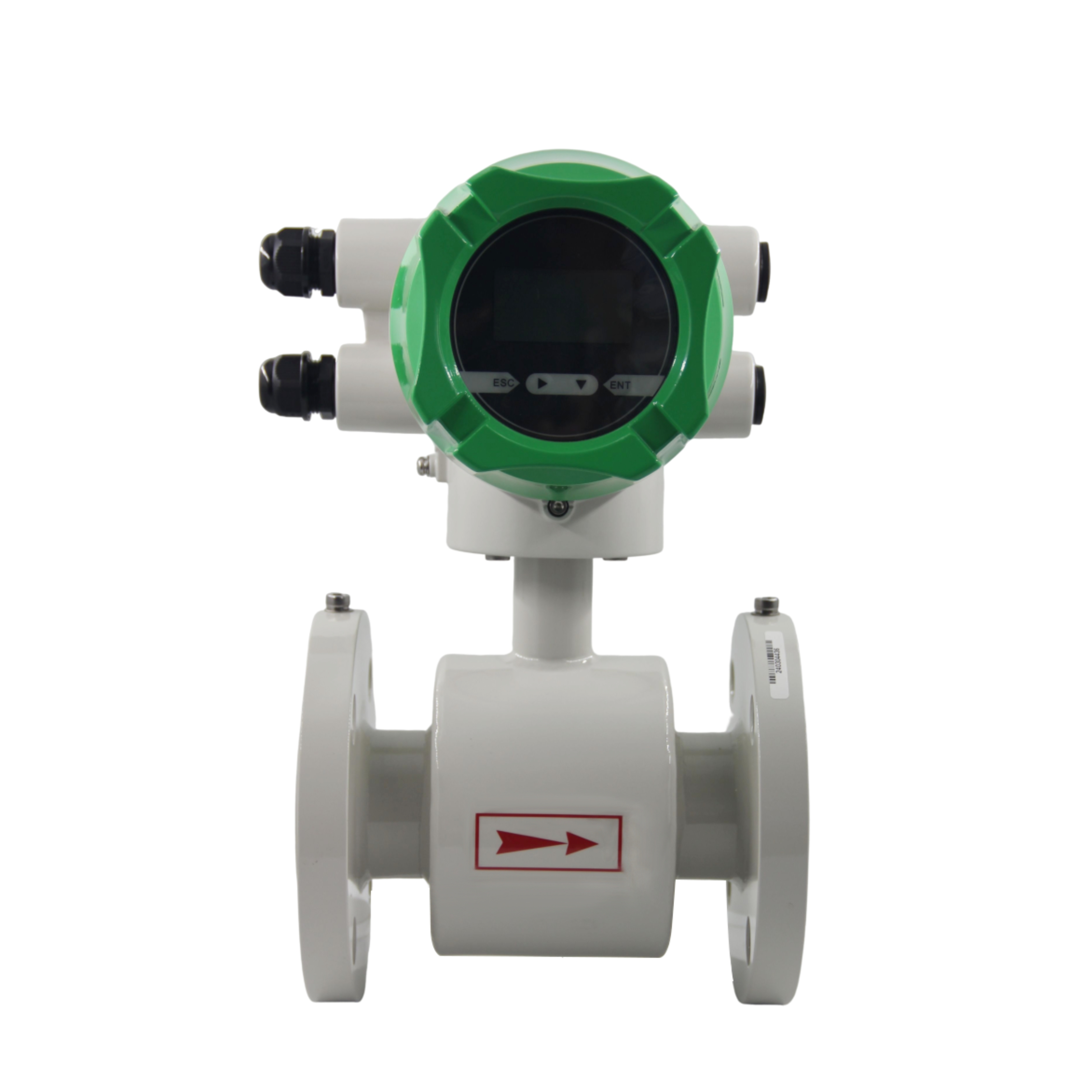The electromagnetic flowmeter, with its high accuracy in measuring conductive fluids and absence of mechanical obstructions, has become an indispensable “flow butler” in industrial production. Under normal conditions, following established processes and standards for equipment calibration can maintain its excellent performance. However, under extreme conditions, whether it’s the harsh climate of high temperature, high pressure, and high humidity, or the unique physical and chemical properties of fluids with strong corrosiveness, high viscosity, and low conductivity, the performance of electromagnetic flowmeters can fluctuate, leading to increased measurement errors. At such times, precise on-site calibration is not only crucial for the reliability of production data but is also closely related to production efficiency, product quality, operational costs, and even production safety. It is an essential guarantee for maintaining the smooth flow of industry’s “lifeblood.”
Here is an overview of electromagnetic flowmeter calibration technology:

Direct Measurement Method (Real Flow Calibration Method):
This method adheres to the most rigorous metrological principles, utilizing specialized standard flow devices to construct a fluid circulation system that closely mimics actual operating conditions. It drives the actual fluid to pass through the electromagnetic flowmeter being calibrated at a predetermined flow rate and flow velocity smoothly. With the help of high-precision standard meters or complex precision measurement facilities, real-time collection and comparison of flow data are conducted. Based on the difference between the two sets of data, the meter factor of the electromagnetic flowmeter is precisely calculated and corrected, achieving high-precision calibration. This approach is akin to refining the accuracy of the instrument with “authentic” working condition ingredients, resulting in a highly credible calibration outcome, which can be considered the “ceiling” level of calibration precision. However, the equipment is expensive, the operation is complex, and the requirements for the site and professional personnel are stringent, making it more commonly found in professional laboratories with substantial technical capabilities.
Indirect comparative method:
As a commonly used method for on-site operation and maintenance, the indirect comparison method cleverly utilizes portable and easy-to-operate clamp-on ultrasonic flowmeters, calibrated and stable instruments of the same type, or mature and authoritative empirical formulas and calibration curves as the “reference flow” benchmark. At the actual working site, the readings of the electromagnetic flowmeter are compared with this reference. With a relatively simple testing process and equipment, potential errors in the instrument are quickly identified, and calibration parameters are adjusted flexibly. Although the precision is slightly inferior to direct measurement methods, its advantages of cost-effectiveness, efficiency, and convenience make it a “valuable assistant” in daily inspections and emergency calibration scenarios.
Field calibration method for electromagnetic flowmeter:
1.Excitation coil test
Insulation Resistance Testing: Safe insulation is the cornerstone of the normal operation of the excitation coil. Using a professional insulation resistance tester, the insulation resistance between the coil and the housing, as well as the pipe, is measured with the power disconnected and the electrodes properly short-circuited. The value must be much higher than 20 MΩ; a value below this threshold may easily lead to leakage risks, interfering with the generation of the magnetic field and the induction of the flow signal.
Copper Resistance Calibration: Under the premise of a constant ambient temperature, accurately measure the copper resistance of the excitation coil. By comparing with the original factory records, if the deviation exceeds the allowable range, it indicates that the coil may have a short circuit, open circuit, or material aging, which could weaken the strength of the excitation magnetic field and lead to inaccuracies in flow measurement.
2.Electrode resistance test
The electrodes, serving as the “sensory antennae” for the signal, have significant importance in their resistance to ground. Under normal operating conditions, the electrode-to-ground resistance should be stable within the range of 2 - 20 kΩ, accompanied by a regular charging and discharging phenomenon, and the resistance values of the two electrodes should be similar. Once the resistance deviates from this range, the “meridians” of signal transmission are obstructed, greatly reducing the accuracy of flow measurement. This is often due to dirt accumulation on the electrodes, corrosion damage, or lining insulation failure.
3.Excitation current test
By connecting a high-precision milliammeter to the excitation current output circuit of the converter, the output current is monitored in real-time. It is meticulously compared with the standard excitation current value specified by the equipment at the time of factory calibration. The error must be controlled within ±0.25mA to be considered acceptable. Any slight deviation in this current can trigger a chain reaction of fluctuations in magnetic field strength, interfere with the electromagnetic induction intensity, leading to a “decline” in the accuracy of flow measurement.
4.Analog and frequency output testing
Activate the analog and frequency output ports of the electromagnetic flowmeter, input multiple sets of different flow set points, and observe the linear change trajectory of the output signal. Use professional data analysis software or a precision multimeter to record and calculate the linear error, strictly adhering to the ±0.5% threshold. If this limit is exceeded, the output signal becomes distorted or erratic, the flow display data deviates from the true value, potentially misguiding production control.
5.Calibration of large bore flow meters
For electromagnetic flowmeters with a diameter of DN1200mm and above, due to their complex structure, high flow rates, and complicated operating conditions, a special test segment for the boost stage NB current is added. During calibration, this current is closely monitored to ensure that the error does not exceed 12mA compared to the reference value under standard operating conditions. This ensures precise measurement of the large volume of fluid and avoids the risk of “amplified” measurement errors that can occur due to the “enlargement” of the diameter.
How can we ensure the stability and accuracy of electromagnetic flowmeters in harsh environments?
1.Environmental adaptability
Customize protective casings based on extreme working conditions, using materials such as high-temperature-resistant alloys and corrosion-resistant plastics; the linings are made of Polytetrafluoroethylene (PTFE), ceramics, etc., which are acid and alkali corrosion-resistant, wear-resistant, and erosion-resistant, thereby strengthening the “protective armor” of the instrument to adapt to complex environments.
2.Explosion-proof certification and protection level
For flammable and explosive high-risk areas, equipment is fitted with corresponding explosion-proof rated instruments (such as Ex d IIB T4) to prevent electrical sparks from causing explosions; the water and dust protection level is maximized (like IP68) to block the “intrusion” of moisture and dust, strictly maintaining the internal electrical safety and performance stability.
3.Electromagnetic compatibility and signal processing
Enhance electromagnetic shielding design, incorporate internal filtering and noise reduction circuits, and employ intelligent algorithms to identify and eliminate interference signals, “purifying” the flow sensing signals to ensure stable and accurate data transmission, and resist electromagnetic “noise”.
4.Maintenance and Calibration
Establish a rigorous regular maintenance and calibration plan, perform daily cleaning of electrodes and inspection of circuits; conduct precision spot checks quarterly, and implement full-scale calibration annually. Fine-tune adjustments based on calibration results to ensure long-term stable and accurate operation.
Field calibration of electromagnetic flowmeters under extreme conditions is a “delicate task” that combines technical professionalism, operational precision, and complexity in dealing with environmental challenges. Starting with a deep understanding of calibration principles, one must accurately select the appropriate methods, build a solid barrier of environmental protection, strictly follow the verification process, and support these efforts with persistent maintenance and calibration measures. Only then can we harness the power of this industrial “flow guardian,” ensuring it steadfastly protects the “lifeline” of production under extreme challenges, and helps the giant wheel of industry sail forward through the waves on the path of high-quality development.


